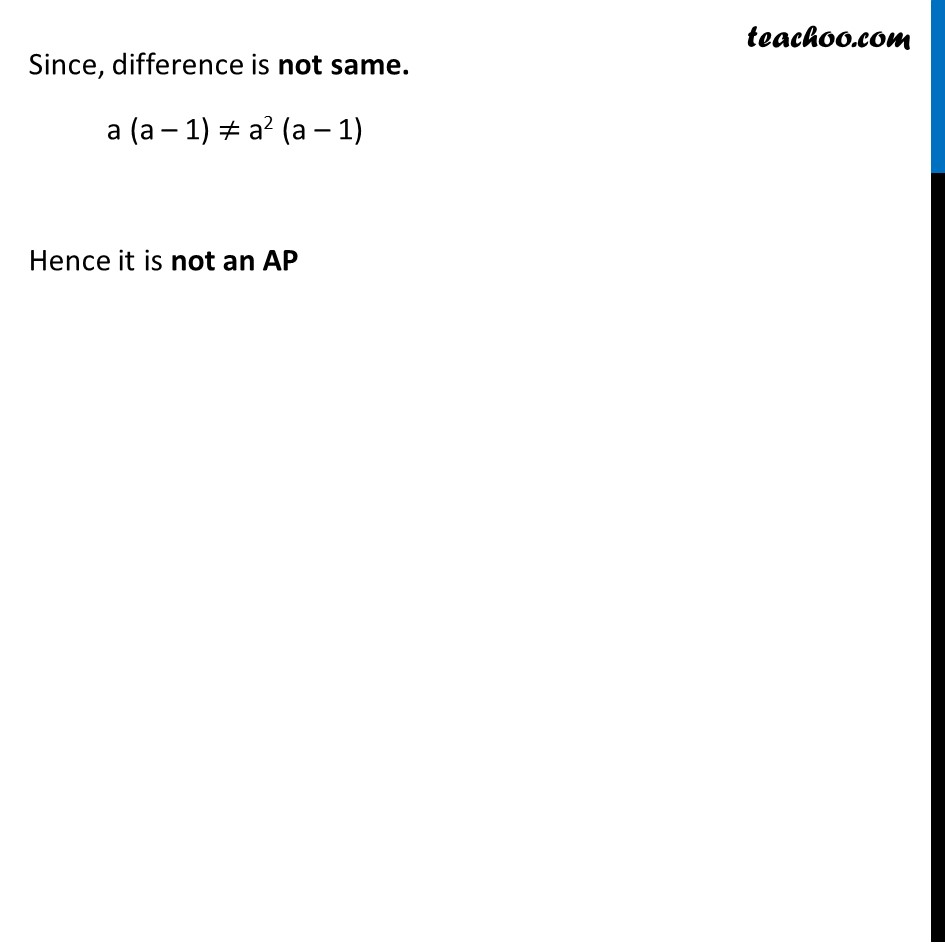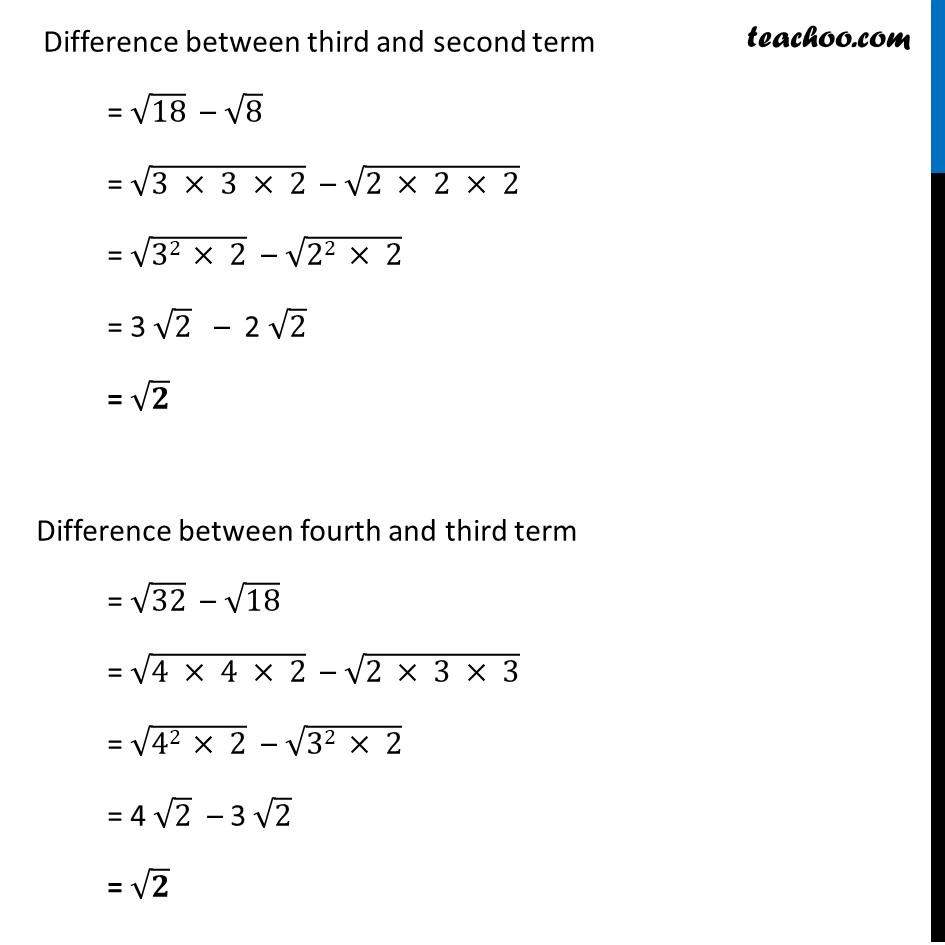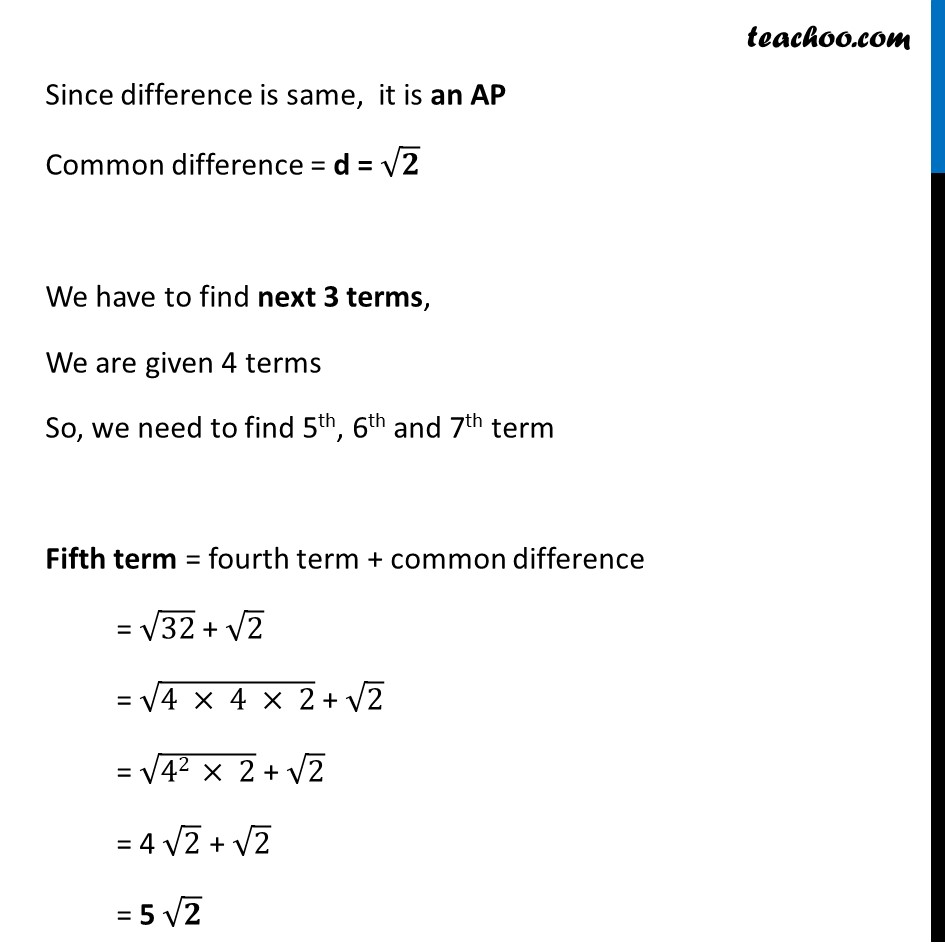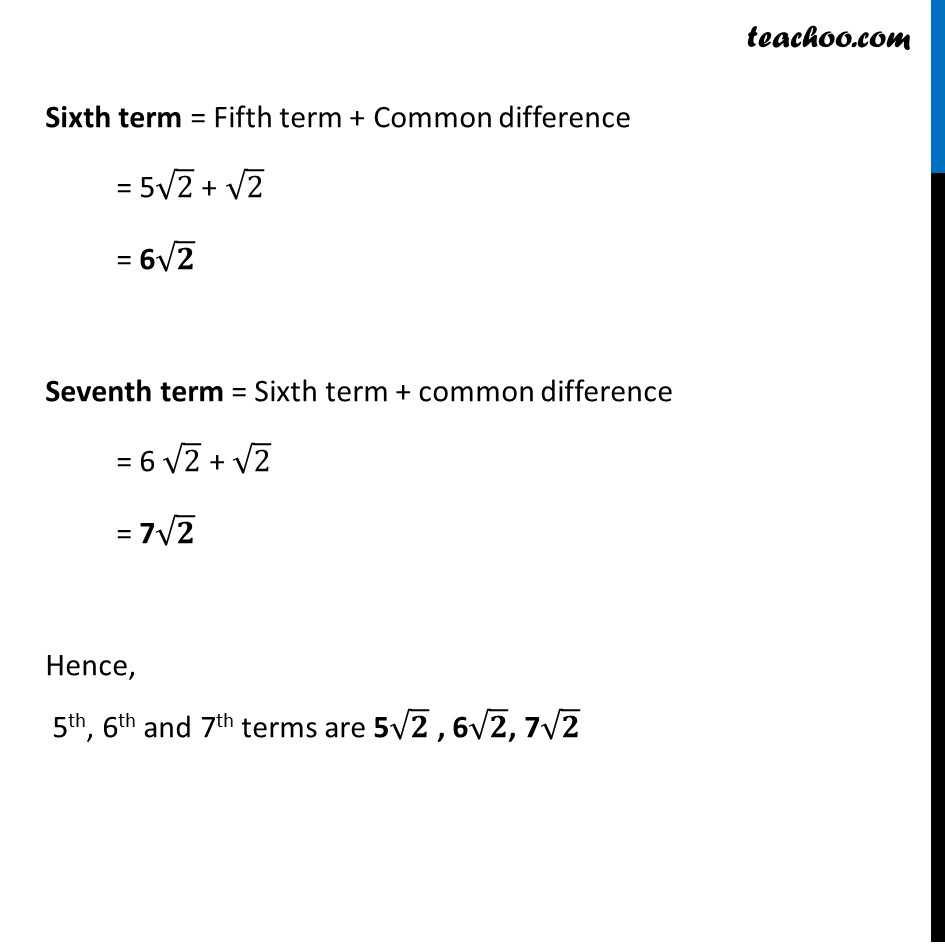












Checking if AP or not and finding a, d
Checking if AP or not and finding a, d
Last updated at December 13, 2024 by Teachoo













Transcript
Ex 5.1, 4 Which of the following are APs? If they form an A.P. find the common difference d and write three more terms. (xi) a, a2, a3, a4 … a, a2 , a3 , a4 … Difference between second and first term = a2 – a = a (a – 1) Difference between third and second term = a3 – a2 = a2 (a – 1) Since, difference is not same. a (a – 1) ≠ a2 (a – 1) Hence it is not an AP Ex 5.1, 4 Which of the following are APs? If they form an A.P. find the common difference d and write three more terms. (xii) √2, √8, √18, √32……… √2 , √8 , √18 , √32 Difference between second and first term = √8 – √2 = √(2 × 2 × 2) – √2 = √(2 × 22) – √2 = 2√2 – √2 = √𝟐 Difference between third and second term = √18 – √8 = √(3 × 3 × 2) – √(2 × 2 × 2) = √(32 × 2) – √(22 × 2) = 3 √2 – 2 √2 = √𝟐 Difference between fourth and third term = √32 – √18 = √(4 × 4 × 2) – √(2 × 3 × 3) = √(42 × 2) – √(32 × 2) = 4 √2 – 3 √2 = √𝟐 Since difference is same, it is an AP Common difference = d = √𝟐 We have to find next 3 terms, We are given 4 terms So, we need to find 5th, 6th and 7th term Fifth term = fourth term + common difference = √32 + √2 = √(4 × 4 × 2) + √2 = √(42 × 2) + √2 = 4 √2 + √2 = 5 √𝟐 Sixth term = Fifth term + Common difference = 5√2 + √2 = 6√𝟐 Seventh term = Sixth term + common difference = 6 √2 + √2 = 7√𝟐 Hence, 5th, 6th and 7th terms are 5√𝟐 , 6√𝟐, 7√𝟐 Ex 5.1, 4 Which of the following are APs? If they form an A.P. find the common difference d and write three more terms. (xiii) √3, √6, √9, √12……… √3 , √6 , √9 , √12 Difference between second and first term = √6 – √3 = √(3 × 2) – √3 = √3 × √2 – √3 = √3 × √2 – √3 × 1 = √𝟑 (√𝟐 – 1) Difference between third and second term = √9 – √6 = √(3 × 3) – √(3 × 2) = √3 × √3 – √3 × √2 = √𝟑 (√𝟑 – √𝟐) The difference is not same √3 (√2 – 1) ≠ √3 (√3 – √2) So, it is not A.P. Ex 5.1, 4 Which of the following are APs? If they form an A.P. find the common difference d and write three more terms (xiv) 12, 32, 52, 72 … 12, 32, 52, 72 Difference between second and first term = 32 – 12 = 9 – 1 = 8 Difference between third and second term = 52 – 32 = 25 – 9 = 16 Difference is not same 8 ≠ 16 So, it is not A.P Ex 5.1, 4 Which of the following are APs? If they form an A.P. find the common difference d and write three more terms (xv) 12, 52, 72, 73 … 12, 52, 72, 73 Difference between second and first term = 52 – 12 = 25 – 1 = 24 Difference between third and second term = 72 – 52 = 49 – 25 = 24 Difference between fourth and third term = 73 – 49 = 24 Since difference is same, it is an AP. Common difference = d = 24 We have to find next 3 terms, We are given 4 terms So, we need to find 5th, 6th and 7th term Fifth term = fourth term + common difference = 73 + 24 = 97 Sixth term = Fifth term + Common Difference = 97 + 24 = 121 Seventh term = Sixth term + Common Difference = 121 + 24 = 145 So, next 3 terms of AP are 97, 121 and 145